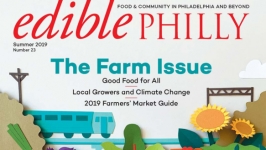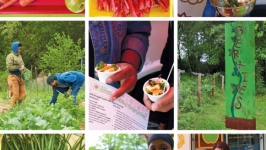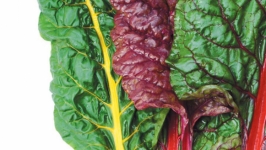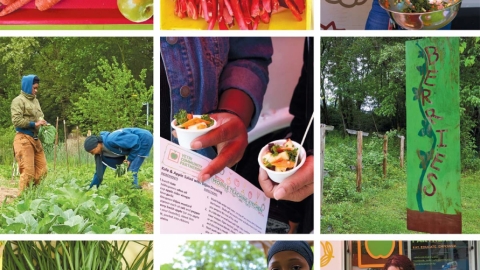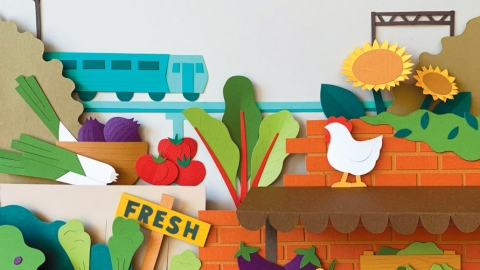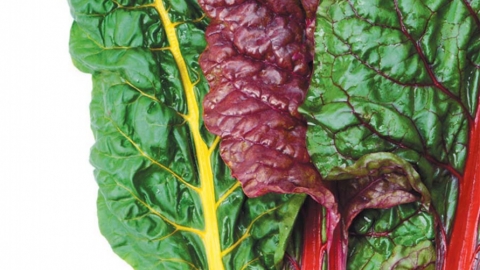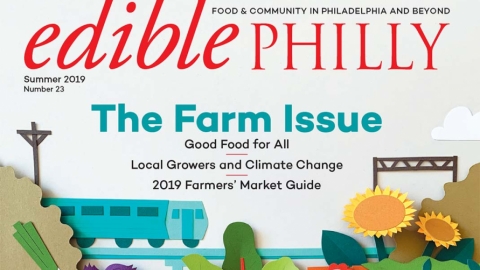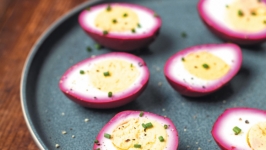Beauty Masks Good Enough To Eat
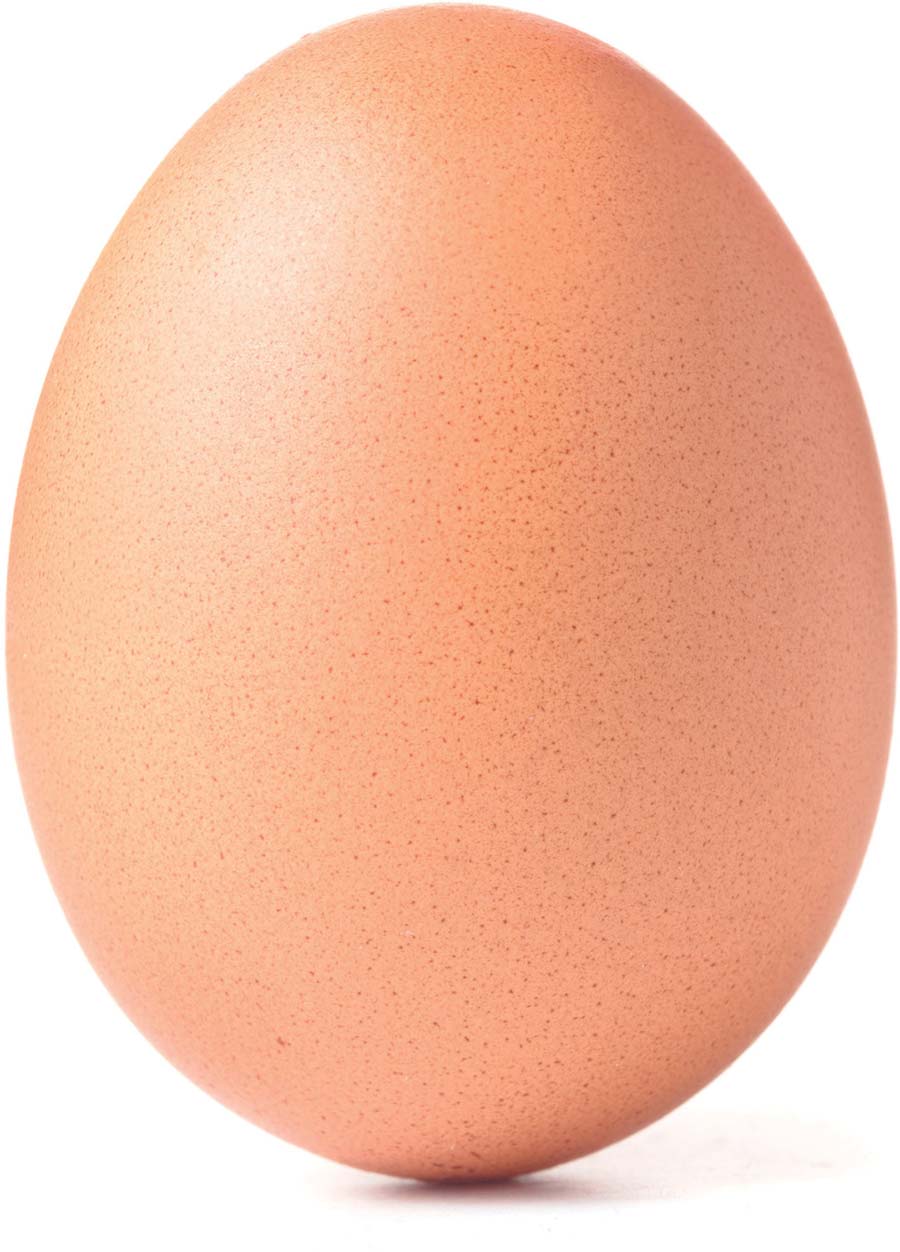 IT STARTED WITH THE EGGS. A dozen of them, delivered to me in my Common Market farm share every other week, and only me to eat them.
IT STARTED WITH THE EGGS. A dozen of them, delivered to me in my Common Market farm share every other week, and only me to eat them.
I had no problem with the apples, the strawberries, the carrots, the lettuce. It was just the eggs that lingered, taking up space in my refrigerator when I brought home the new CSA goodies. Those farm-fresh, certified-humane eggs were like ticking time bombs.
At first, I made a lot of egg dishes: scrambled eggs, frittatas, and quiches (the more eggs used, the better). Then I tried making fried eggs to put on top of things like grilled cheese, pizza, and avocado toast. For a while, it was all eggs, all the time. Eventually, I got sick of them, but the eggs still kept coming. So, I tried to hide them, to make them less eggy and noticeable. Baking is good for that. Unfortunately, baking was not good for me—I made, and ate, too many cookies and breads and muffins.
Finally, exasperatedly, I did a quick Google search for “what to do with eggs without eating them.” That’s when I cracked it.
My problem was that I was trying to eat all of those eggs. There were other ways to use them up and prevent them from going to waste. For example, there are egg masks for shinier, healthier hair. You can also make egg masks for your face. It was the dawn of a new era.
This was around the time when my friends and I started to become aware of the fun luxury of using more than just a facial cleanser and a moisturizer. Masks and serums and scrubs started entering our conversations, our shopping trips, and our bathrooms. And, as I am prone to do, I went all in.
Though I thought my skin and hair looked and felt better, I had a sinking feeling that it was all becoming too much. The products took up a lot of space in my tiny shower and bathroom cabinet. The bottles and containers weren’t always able to be recycled (or even upcycled). The ingredients lists were sometimes longer than those on food items in my pantry, and they were filled with unpronounceable synthetic ingredients. Plus, it was costing me a ton of money!
When I read about facial egg masks on some random blog, I thought it seemed too easy. An egg for a face mask—really? What was the catch, salmonella?
I dubiously smeared egg whites all over my face and though my skin felt tighter afterwards, I wasn’t really impressed. Still, I tried the egg hair mask, whisking the egg in one of the ramekins I had used to make oeufs en cocotte. Then, I coated my dry hair with the mixture on and threw on a shower cap. After 20 minutes, I hopped in the shower and shampooed twice to get out any eggy residue. When my hair dried, it was softer, curlier, and noticeably shinier. All that, and I had used up an egg, too.
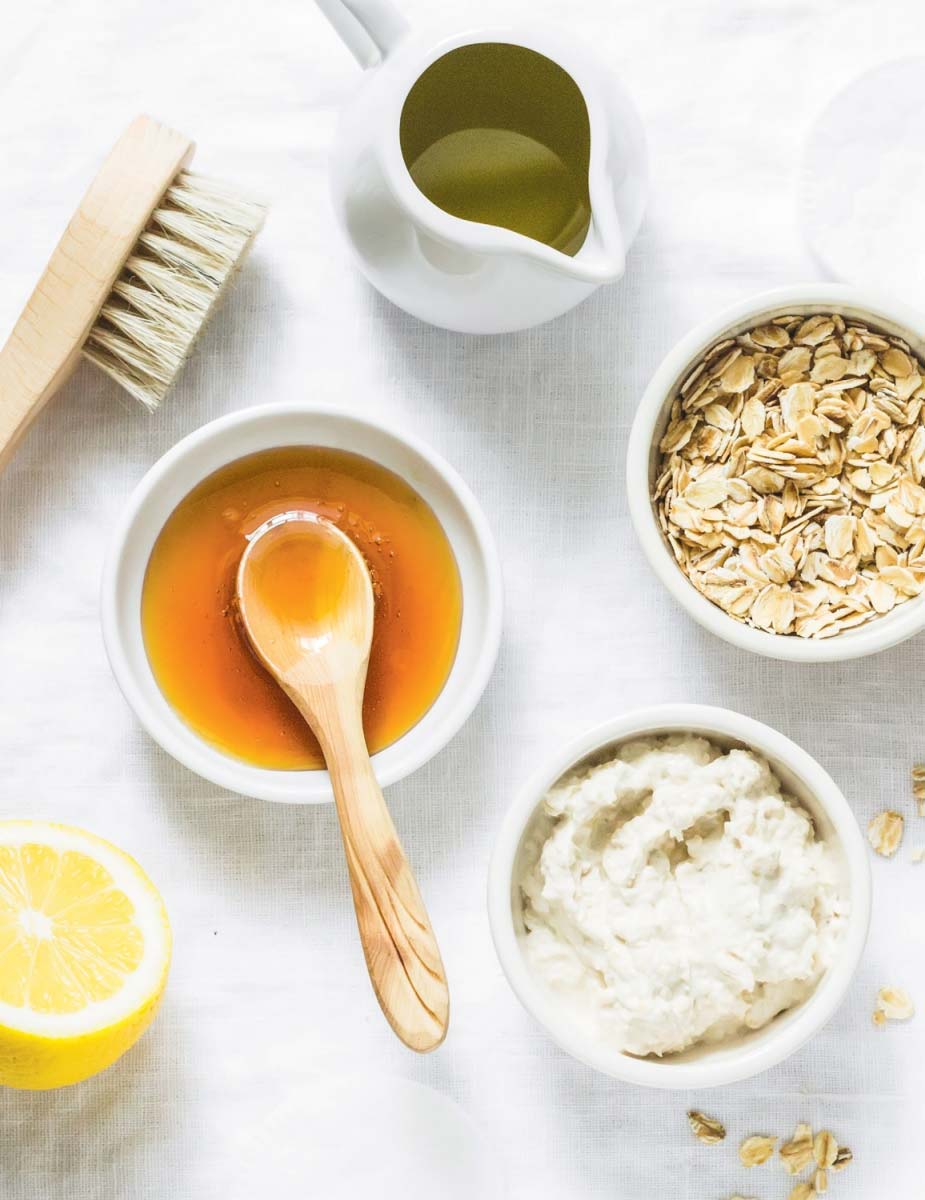
From then on, I was sold on using food to make my own natural beauty products. I started experimenting with leftovers in different ways, saving used coffee grounds as a body scrub and mixing the last couple spoonsful of dry oats with milk and smearing that on my face. Ingredients became incorporated into my beauty routine, too: watered-down apple cider vinegar as a scalp and face toner, coconut oil for makeup remover, and olive oil stirred into that raw egg mixture for hair masks. Waste not, want not.
As my skills grew, I spent less money at Sephora and Ulta but my grocery list stayed pretty much the same. When I went to the farmers’ market, I wasn’t buying items just to eat. Figuring out how to incorporate food into my beauty routine saved my face, my hair, my wallet, and my farm share—which now offers an eggs-free bundle that I recently signed up for. But I likely would have missed out on the world of homemade beauty products if that option had been available earlier.


